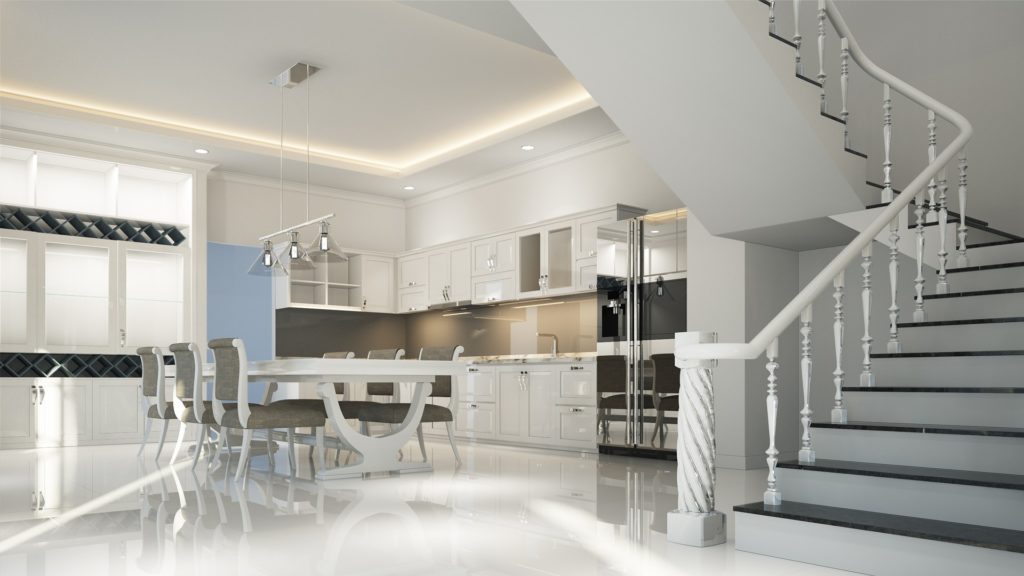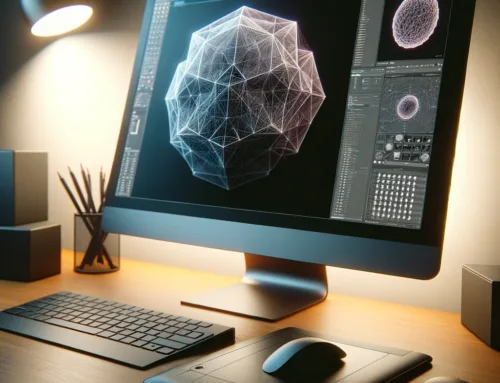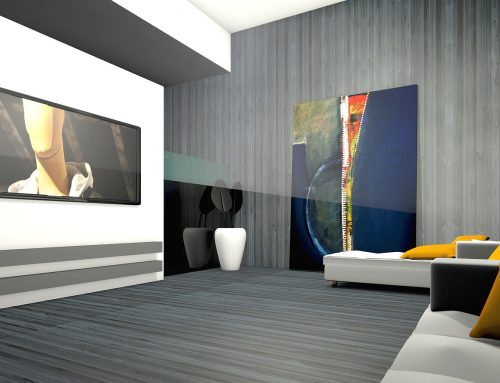Einsteigerguide: Einführung in iRay.
Iray für 3ds Max ist ein von Lightworks entwickelter Plugin-Renderer, der physikalisch genaue Renderings erstellt, indem dieser Lichtwege verfolgt.
Es entfaltet die volle Leistungsfähigkeit der Interaktivität und Skalierbarkeit von iRay mit einem benutzerfreundlichen, intuitiven Workflow, der die Produktivität maximiert, indem dieser sofortiges visuelles Feedback während der Szenenentwicklung liefert.
Die Nvidia vMaterials Library unterstützt neben der einfachen Erstellung oder Modifikation von physikalisch basierten Leuchten und Materialien mit Hilfe eines Schichtmodells auch den Materialaustausch mit anderen MDL-kompatiblen Anwendungen.

In diesem Beitrag werden wir die Konzepte und Funktionen des Plugins sowie Hilfe und Ratschläge zur Verwendung von iRay für 3ds Max beschreiben. Dieser Leitfaden geht von einer Vertrautheit mit der Benutzeroberfläche und den Konzepten in 3ds Max aus.
Was ist iRay?
Iray für 3ds Max ist ein physikalisch basierter Raytracing-Renderer mit präzisen Materialien, der auf Nvidias Materialdefinition (MDL) Standard basiert. Diese physikalisch genaue Engine ermöglicht es Ihnen, Bilder und Animationen in höchster Qualität mit einem realistischen Ansatz für Materialien, Kameras und Beleuchtung zu erstellen. Die Beleuchtung in einem iRay gerenderten Bild ist authentisch für die reale Welt, da alle Lichtwechselwirkungen in Ihrer Szene genau dargestellt werden.
Iray für 3ds Max basiert auf der Nvidia-Technologie iRay, die in vielen professionellen High-End-Anwendungen und von führenden Design- und Visualisierungsunternehmen auf der ganzen Welt eingesetzt wird. Iray verfügt über Verbesserungen, einschließlich einer leicht verständlichen Materialstruktur und Verbesserungen der Benutzerfreundlichkeit.
Iray für 3ds Max erweitert die Möglichkeiten der iRay-Implementierung, die derzeit in einigen Versionen von 3ds Max enthalten ist, um neue Funktionen wie vollständigen MDL-Support, interaktives Rendering, Support für Cloud- oder Remote-Renderings und einen verbesserten Ansatz zur Verwendung und Erstellung physikalisch genauer Materialien.
Das iRay-Plugin enthält 2 Renderer: iRay+ Renderer erzeugt Produktionsbilder, während der iRay+ Interactive Renderer es Ihnen ermöglicht, Modelle in Echtzeit mit Ergebnissen zu navigieren, die vom iRay Renderer kaum zu unterscheiden sind. Iray unterstützt auch Remote-Rendering, mit dem Sie die GPU-Leistung von Cloud-Rendering und Renderfarmen nutzen können.
Warum iRay nutzen?
Konzepte.
Iray für 3ds Max basiert auf den grundlegenden Konzepten der realen Welt, mit Lichtphysik, fotografischen Einstellungen und der Struktur der Materialien, die alle lebensecht sind. Wir verwenden praxisnahe Konzepte und präsentieren die notwendigen Parameter, um atemberaubende Bilder und Animationen zu erhalten.
Interaktives Rendering.
Iray Interactive Renderer verwendet fortschrittliche Approximation-Algorithmen, um den Realismus nachzuahmen und gleichzeitig unerwünschtes Rauschen zu minimieren. Dies gibt Ihnen mehr Geschwindigkeit in Ihrem Workflow. Die Möglichkeit, beide Renderer gleichzeitig zu verwenden, bedeutet, dass Sie Ihre Szene mit dem iRay+ Interactive Renderer auf Ihrer Workstation schnell vorab ansehen können, während Sie für Ihre Produktionsarbeit aus der Ferne im iRay+ Renderer rendern.
3ds Max.
iRay für 3ds Max wurde so konzipiert, dass es Ihre bestehenden Workflows ergänzt und nicht unterbricht. Die Anzahl der iRay-spezifischen Benutzeroberflächen wurden auf ein Minimum reduziert und, wenn möglich, auf 3ds Max verschoben, um Aufgaben zu erfüllen. Wenn wir unsere eigenen Objekte und Parameter verwenden, präsentieren wir sie übersichtlich und in den bekannten Formaten von 3ds Max.
Leistungsstark.
Iray für 3ds Max wurde entwickelt, um die GPU-Hardware optimal zu nutzen und sicherzustellen, dass Ihr Rendering so schnell und leistungsstark wie möglich erfolgt. Wir empfehlen die Verwendung von Nvidia-Grafikprozessoren, um die Leistung Ihres Renderings zu verbessern. Lokales und Remote-Rendering werden vollständig unterstützt und können mit vielen Batch-Rendering-Tools verwendet werden.
Erweiterbar.
Iray für 3ds Max ist nur eines der vielen zukünftigen Produkte der iRay-Produktlinie, die alle komaptibel mit dieser und anderen Nvidia iRay-fähigen Software sind. So können MDL-Materialien und andere Elemente in jeder Phase eines Workflows vom Prototyping über die Überprüfung, Simulation und Fertigung eingesetzt werden. Iray für 3ds Max beinhaltet die Konvertierung von Mental Ray® und Autodesk Materialien und bringt so alle vorhandenen Szenen schnell auf den neuesten Stand.
Flexibel.
Nvidias iRay wird von Profis in vielen Branchen eingesetzt, darunter Automobil, Schmuck, Architektur, Produkt, Innenarchitektur und viele mehr. Eine umfangreiche Materialbibliothek bildet die Grundlage für die Erstellung nahezu aller Materialien. MDL bietet eine leistungsstarke Methode zum Ausdrucken und Teilen von Material.
Wir hoffen, dass wir ihnen einen kurzen Einblick in die Thematik bieten konnten. Sofern Sie noch Fragen oder Anregungen zu dieser Thematik haben sollten, hinterlassen Sie uns unten einen Kommentar.
Vielen Dank für Ihren Besuch.


